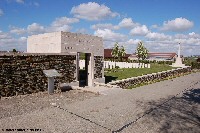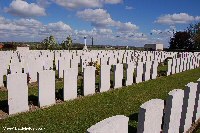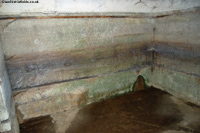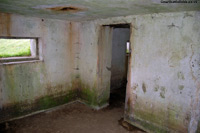Zandvoorde
The World War One Battlefields site is undergoing a major update, with pages being converted to a new, user-friendly mobile format. The updated pages can be found at Updated World War One Battlefields. Some pages such as this one remain in the original format pending update.
This village is to the south-east of Ypres, and can be reached by following the N8 to Gheluvelt and then turning right at the signposted road to Zandvoorde, or else via Zillebeke and following smaller roads, which is not as straightforward.
Zandvoorde sits on a slight rise, and the church on top of this dominates the area around. The church is located in the centre of the village, and there are four First World War graves together to the right of the church. The graves are of two men and two officers of the 10th Hussars who died on the 26th of October 1914. The family of one, Lietenant Christopher Turner, donated a stained glass window to the church after the war.
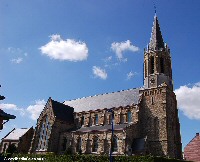
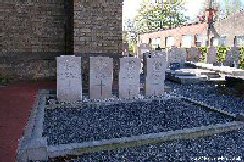
Zandvoorde Church (left) and 10th Hussar graves in the churchyard
Outside the church by the village war memorial is an orientation panel giving information on the village before and during the First World War, including contemporary wartime pictures showing the village in ruins, as well as a map showing the actions of the 30th of October 1914. This was when the Household Cavalry held the line at Zandvoorde, and after a German attack many of the men were cut off, most being killed. After the war, their memorial was located at Zandvoorde.
The Household Cavalry memorial is located at the end of a narrow cinder pathway setbetween houses, leading to the right from the road downhill from the church. At the entrance is a register box similar to those found in CWGC cemeteries. This contains an old and somewhat battered register and visitors book, with beautiful script.
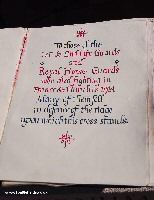
Title page of the register at the Household Cavalry Memorial
The memorial is an extremely tall, but slender column surmounted with a cross, located in a hedged area at the end of the path. On the base at the front are the same words that are found on the title page of the register (see picture above).
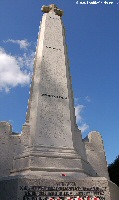
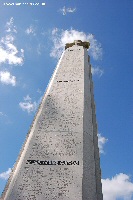
The Household Cavalry Memorial
The names are all clear and legible, even those towards the top of the column. This is because the inscriptions were renewed just a year or so ago. There is an interesting story behind the location of the memorial, and this is told in detail by Tony Spagnoly and Ted Smith in Salient Points Two.
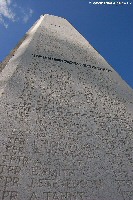
Names inscribed on the Household Cavalry Memorial
Lord Charles Sackville Pelham Worsley was 27 and serving in C Squadron of the Household Cavalry on the 30th of October 1914 (the action described briefly above). An order to withdraw did not reach the machine gun section he was in charge of, or some of the other soldiers. They were cut off, and Lord Worsley was first listed as 'Missing', and was officially recorded as dead early in 1915. However, Worsley's body had been found and buried by the Germans, and a plan of where he had been buried was later passed on via Diplomatic channels from the Germans. In December 1918 his grave was located by a British Officer using the plans, with the upright wooden portion of the cross which had been placed there by the Germans still standing. A replacement wooden cross was put there in January 1919, and Lord Worsley's widow later purchased this land.
However in 1921, as part of the process of concentrating graves, Lord Worsley's body was exhumed and reburied in Ypres at the Town Cemetery Military Extension. The Household Cavalry Memorial was built on the spot where the grave had been, and Lord Worsley's name can be seen on the memorial very near the bottom.

The Memorial was unveiled in 1924, and an old postcard view of it is shown below. It is now not possible to get to the position beyond the memorial where this photograph was taken from.
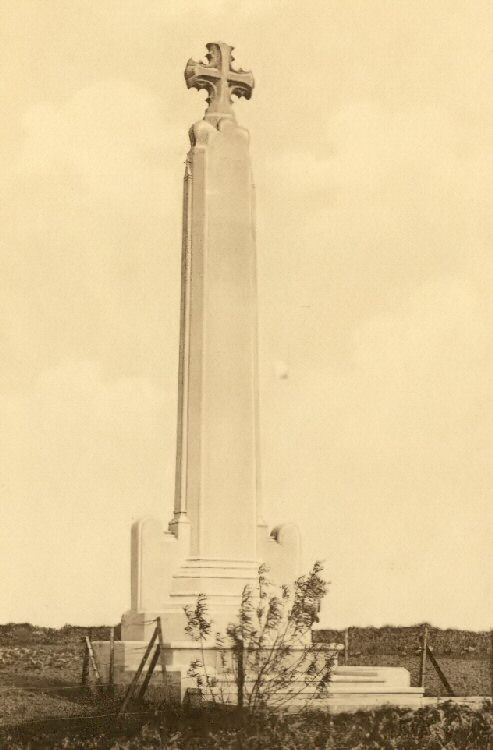
An older view of the Household Cavalry Memorial. Photo: NELS
Returning up the hill to the centre of the village, Zandvoorde British Cemetery can be reached along a small road to the right. This is a post-armistice concentration cemetery, and the village name is spelt 'Zantvoorde' above the entrance-way (which was the spelling during the Great War). Both spellings are used for the cemetery on the CWGC website however.
The right-hand view above can be compared with a postcard of the cemetery taken between the wars shown below. The views are very simiilar, except that one or two crosses remain in the older picture whilst today of course the graves are uniformly marked by headstones.
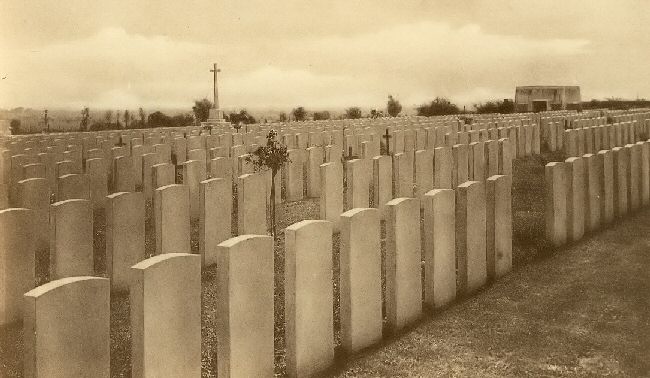
An older view of Zandvoorde British Cemetery. Photo: NELS
One 'believed to be buried in this cemetery' special memorial is located directly opposite the entrance, by the far wall. On the left side of the cemetery, half way back, are a number of special memorials commemorating men who died in October and November 1914, mainly, but not all, Guardsmen. These are men who were buried in German cemeteries and whose graves could not be located when the cemeteries were concentrated here.
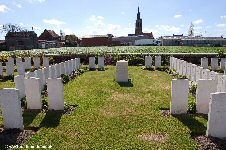

Special memorials to soldiers whose graves in German cemeteries were destroyed
Buried in the cemetery is a Victoria Cross winner, Captain James Brooke of the 2nd Gordon Highlanders. Brooke was a Sandhurst Sword of Honour winner from Aberdeenshire who won the VC on October the 29th 1914, when he led two attacks on the German trenches at Gheluvelt under heavy fire, recapturing a lost trench at what was described as 'a very critical moment......at a time when a general counter-attack could not have been organised'. He was a Lieutenant when he died, aged 30, the promotion to Captain being awarded post-humously.
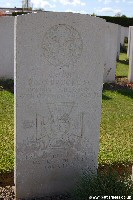
The grave of VC winner Captain James Brooke
An information board is located just outside the entrance to the cemetery, and records that the village was lost on October the 30th 1914, and was held by the Germans for almost the rest of the war. It was retaken just six weeks before the Armistice.
Not far away, to the south of the village, continuing past the entrance to the Household Cavalry Memorial, is a well-preserved substantial German bunker.
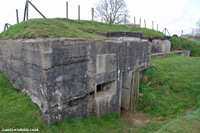
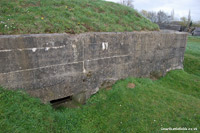
Views of the rear (left) and front (right) of the bunker at Zandvoorde
An information board located next to the bunker also gives a diagram of the layout, reproduced below. W stands for 'Watchroom' and S for 'Staff room' on the plan.
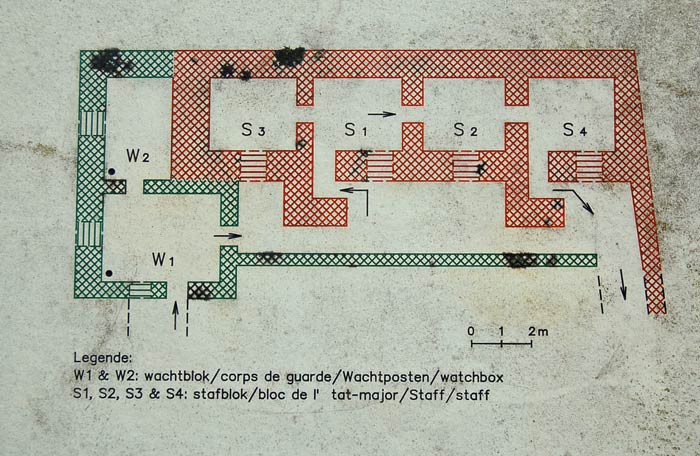
Plan of the Zandvoorde bunker
The exterior is quite pitted and scarred, and some of the damge visible may be contemporary with the war. The massive scale of the fortifications can be seen from the view below.
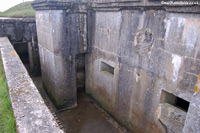
Rear entrance to the 'Staff' areas of the bunker
It is possible to enter the bunker, and although it is large, the rooms themselves are not big, and they are dank and dingy - and the floor may depending on the time of year be water covered.
On the outside is an inscription showing that the bunker was constructed in 1916. It is also clear by looking at the window slits exactly how thick the concrete is that makes up this structure - despite which damage can be seen on the outside, and although the interior would have been safe, it would have been a terrible experience to suffer an intense bombardment even within a bunker such as this one.
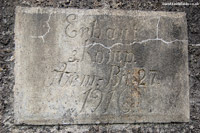
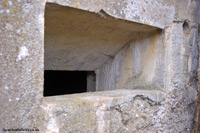
Inscription on the bunker (left) and a view showing the thickness of the concrete (right)
Sources & Acknowledgements
Commonwealths Wargraves Commission website
Major & Mrs Holt: Battlefield Guide to the Ypres Salient
Tony Spagnoly & Ted Smith: Salient Points Two
The Times archives

